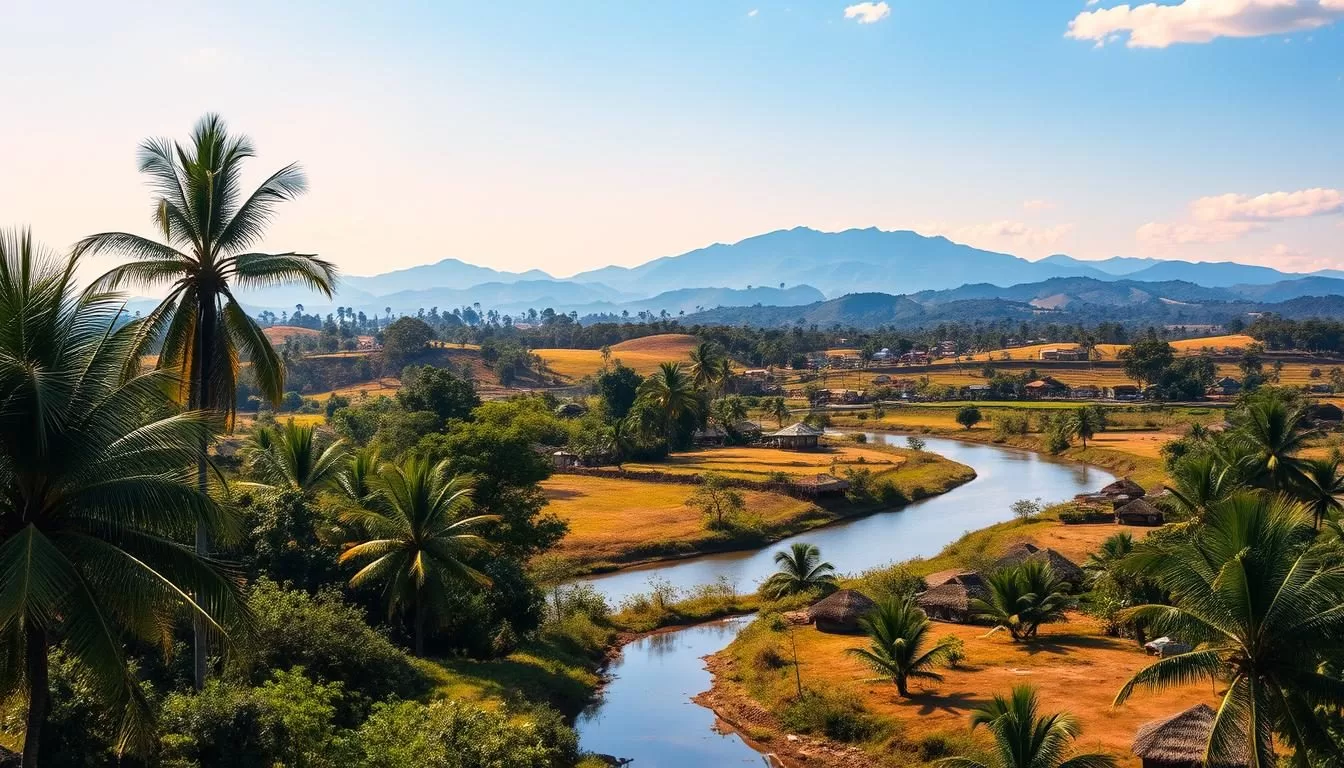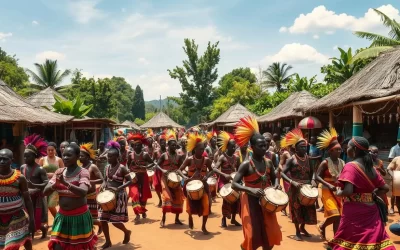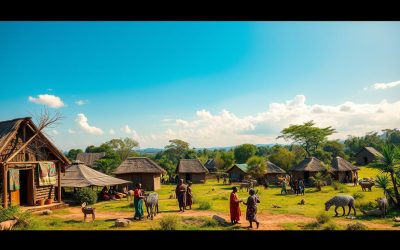✓ Accommodations ✓ Flights ✓ Rental Cars
Planning a trip to the Central African Republic requires a deep understanding of its distinct weather patterns to ensure an optimal experience. The country’s tropical climate is characterized by well-defined dry and rainy seasons, significantly impacting travel conditions and wildlife viewing opportunities.
Understanding the weather and season is crucial for planning activities, packing appropriately, and ensuring health and safety during your visit. By knowing the best time to visit, you can tailor your trip to enjoy travel experiences such as wildlife viewing, cultural experiences, or outdoor adventures to the fullest.
This guide will help you determine the ideal time to visit the Central African Republic based on your interests, ensuring a memorable and enjoyable journey.
Understanding Central African Republic’s Climate
Understanding the climate of the Central African Republic is essential for planning a successful trip. The country’s climate varies significantly across different regions and seasons.
Tropical Climate Patterns
The Central African Republic experiences a tropical climate, characterized by high temperatures and high levels of humidity throughout the year. The amount of sunshine in the Central African Republic is higher in winter than in summer, and it’s also higher in the north than in the south.

Dry and Rainy Seasons Overview
The country has two distinct dry seasons: the main one from November to March and a shorter period in June and July, often called the “short dry season.” During these dry seasons, sunshine is abundant, particularly in the northern regions.
| Season | Months | Characteristics |
|---|---|---|
| Dry Season | Nov to Mar, Jun to Jul | Abundant sunshine, clear skies |
| Rainy Season | Apr to Oct | Heavy downpours, potential flooding |
The rainy season typically runs from April to October, bringing heavy rainfall that can cause flooding and make travel challenging. Understanding these weather conditions is crucial for planning activities and ensuring safety.
Central African Republic: Best Months for a Weather-Savvy Trip
For a weather-savvy trip to the Central African Republic, identifying the best months to visit is essential. Understanding the country’s climate patterns can significantly enhance your travel experience.
November to March: Prime Visiting Season
The period from November to March is considered the prime visiting season for the Central African Republic. During these months, the weather is generally dry, making it ideal for various outdoor activities such as wildlife viewing and trekking. The dry conditions facilitate easier access to the country’s attractions, ensuring that your trip is both enjoyable and memorable.
The dry season also offers a great opportunity to witness the country’s rich biodiversity. With less rainfall, the chances of spotting wildlife are higher, making it a perfect time to visit for nature enthusiasts.
June to July: The Short Dry Season
While the main dry season is from November to March, June and July offer a secondary window of relatively dry weather, known locally as the “short dry season.” This period provides a unique opportunity for travelers who cannot visit during the main dry season but still want to experience favorable weather conditions.
During June and July, the Central African Republic experiences a brief respite from the heavy rains, allowing for a blend of the lush greenery of the rainy season and relatively accessible travel conditions. It’s an ideal time for those seeking a balance between vibrant landscapes and manageable travel itineraries.
| Period | Weather Conditions | Ideal For |
|---|---|---|
| November to March | Dry | Outdoor activities, wildlife viewing |
| June to July | Short dry season, less rain | Balancing greenery and accessibility |

Understanding these seasonal variations can help you plan your trip to the African Republic more effectively, ensuring a memorable and enjoyable experience.
Month-by-Month Weather Guide
To make the most of your trip to the Central African Republic, it’s vital to understand the country’s monthly weather patterns. The climate varies significantly throughout the year, impacting the best times for activities such as wildlife viewing and exploration. By breaking down the weather month by month, you can better plan your trip.
December to February: Peak Dry Season
During December to February, the Central African Republic experiences its peak dry season. This period is characterized by dry and relatively cool weather, making it ideal for outdoor activities and wildlife viewing. The dry conditions make it easier to spot animals in areas such as the Dzanga Bai.
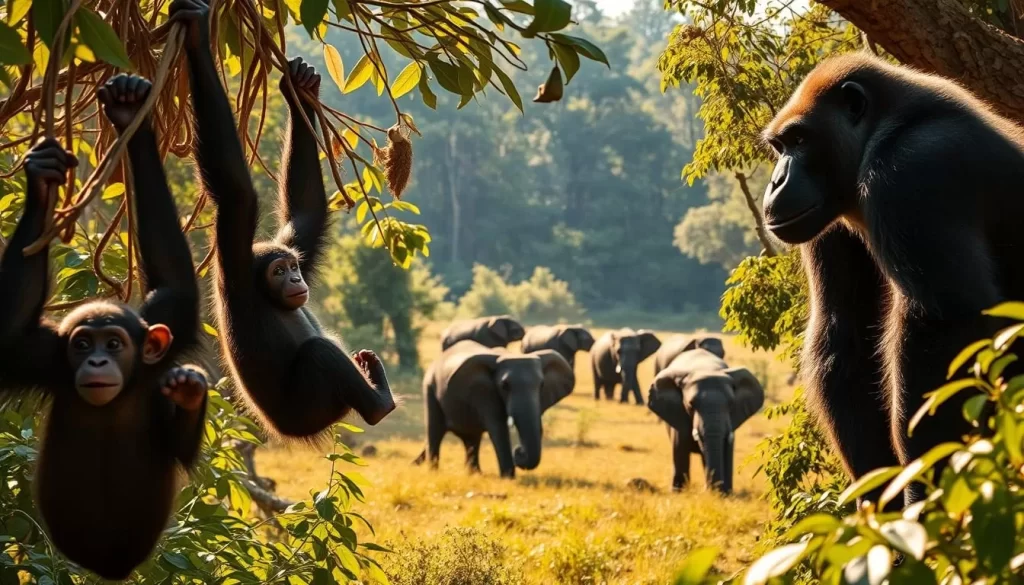
March to April: Transition Period
As the dry season comes to an end, March and April mark a transition period in the Central African Republic’s climate. The weather starts to warm up, and there’s an increase in humidity, signaling the approaching rainy season. Although it’s a transitional time, these months can still offer good conditions for exploring the country’s diverse landscapes and wildlife.
May to October: Rainy Season Considerations
The months from May to October are characterized by the rainy season in the Central African Republic, with the exception of a short dry spell in June and July. Heavy and frequent rainfall, particularly in August and September, can impact travel plans. However, this season also brings the landscape to life, with lush vegetation and full rivers, and offers unique opportunities for viewing wildlife as they forage for food in the fruiting forests.
Traveling during the rainy season requires careful planning, appropriate gear, and flexibility. While some roads may become impassable, the rainforest canopy protects most excursions from the rain. The weather conditions during this time can be challenging, but they also create a vibrant and lush environment, making it a good time to visit for those who don’t mind the rain.
Weather-Based Activities and Attractions
From vibrant cultural festivals to thrilling wildlife safaris, the Central African Republic offers a diverse array of activities and attractions that cater to different interests. The country’s rich cultural heritage and breathtaking natural beauty make it an ideal destination for travelers.
Wildlife Viewing Opportunities
The Central African Republic is home to diverse wildlife, making it a prime destination for safari enthusiasts. During the dry season, wildlife viewing becomes easier as animals congregate around water sources, providing excellent opportunities for spotting a variety of species.
You can explore the country’s national parks and reserves, such as the Manovo-Gounda St. Floris National Park, which is a UNESCO World Heritage Site. The dry season, from November to March, is particularly ideal for wildlife viewing as the dense vegetation thins out, making it easier to spot animals.
Cultural Experiences and Festivals
The African Republic is rich in cultural heritage, with numerous festivals and events taking place throughout the year. The capital city, Bangui, serves as a cultural hub where you can visit the Boganda Museum, explore the artisanal center, and witness traditional dance performances by groups like Compagnie Molika.
The dry season provides ideal conditions for visiting cultural sites such as the prehistoric monoliths near Ouadda and the ancient raised stones near Bouar that date back to the first millennium BCE. You can also engage with indigenous Pygmy communities along the banks of the Oubangui River and learn about their traditional practices.
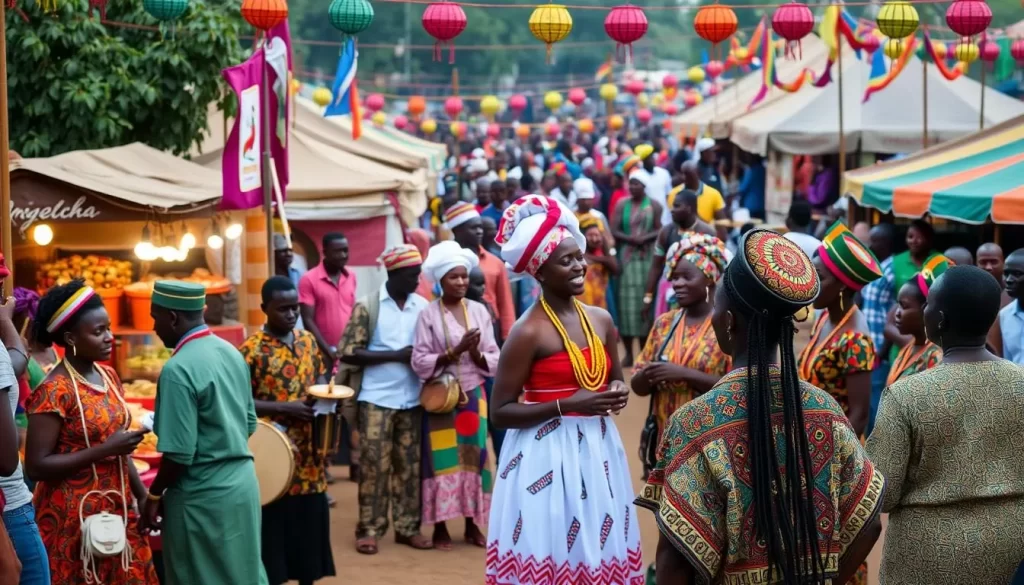
Practical Travel Tips for Weather-Conscious Travelers
To make the most of your trip to the Central African Republic, consider the weather. The country’s climate varies significantly across different seasons, impacting your travel plans and activities.
What to Pack Based on Season
Packing the right gear is essential for a comfortable trip. During the dry season, lightweight and breathable clothing is recommended, while the rainy season requires waterproof gear and sturdy boots. Here’s a summary of what to pack:
| Season | Clothing | Accessories |
|---|---|---|
| Dry Season | Lightweight, breathable clothing | Sunscreen, sunglasses |
| Rainy Season | Waterproof clothing, sturdy boots | Umbrella, rain gear |
Health and Safety Considerations
Your health and safety are paramount when traveling to the Central African Republic. The risk of water-borne diseases and malaria increases during the rainy season, making antimalarial medication and water purification methods essential. During the dry season, be mindful of dehydration and heat-related illnesses, particularly in remote areas with limited medical facilities.
- Consult a travel health specialist before your trip to ensure you have all necessary vaccinations, including yellow fever.
- Stay informed about the current security situation in your intended destination areas.

Conclusion: Planning Your Perfect Central African Republic Adventure
The Central African Republic is a destination that offers unique experiences throughout the year, but the right timing can make all the difference. For most travelers, the primary dry season from November to March provides the optimal balance of comfortable weather and wildlife viewing opportunities. If you’re interested in gorilla tracking and wildlife photography, prioritize January and February for the best conditions. Alternatively, consider the short dry season of June-July for a reasonable compromise. Regardless of when you visit, proper preparation is key. The country’s remarkable natural beauty, rich cultural heritage, and extraordinary wildlife make it a worthwhile destination. With the right planning, your Central African Republic adventure will be both rewarding and memorable.
The above is subject to change.
Check back often to TRAVEL.COM for the latest travel tips and deals.
